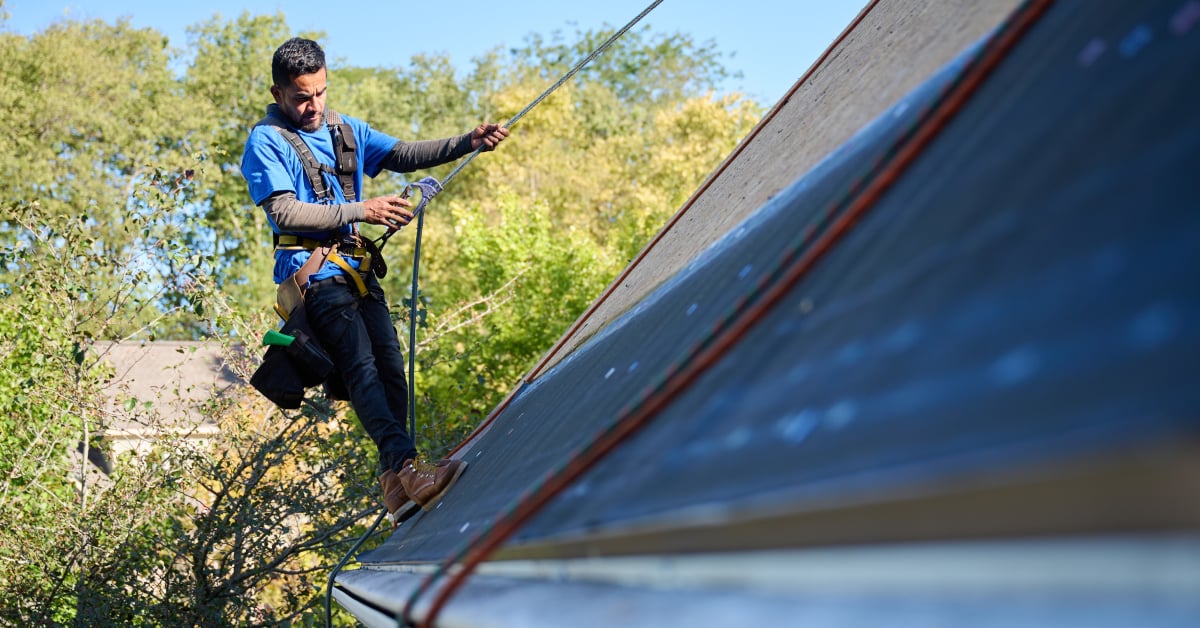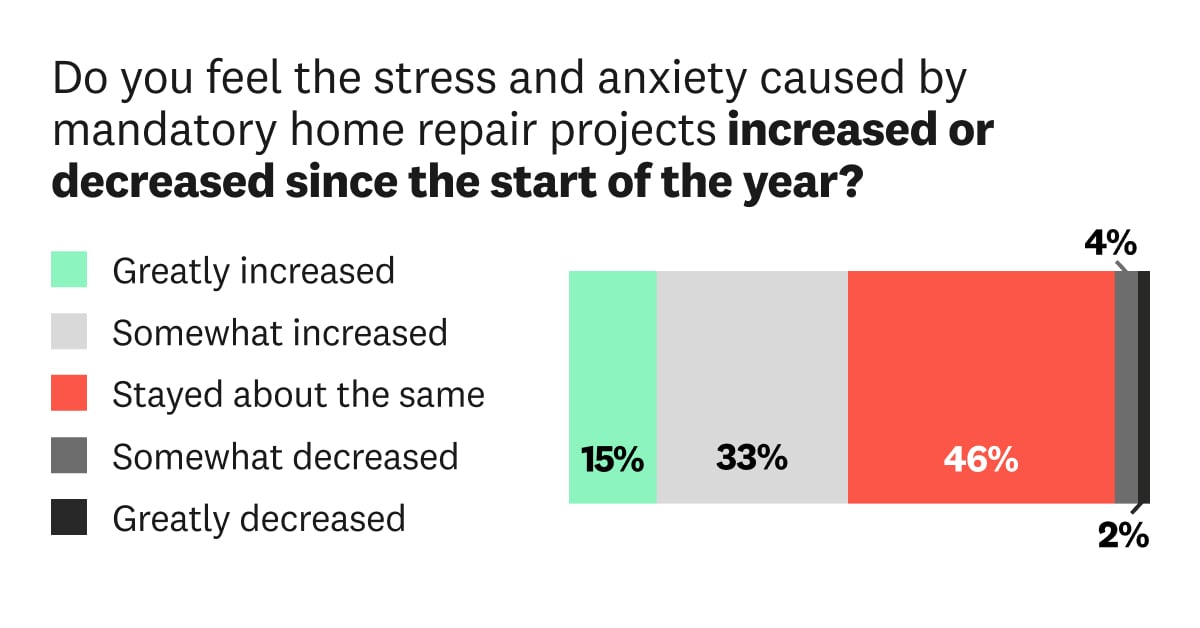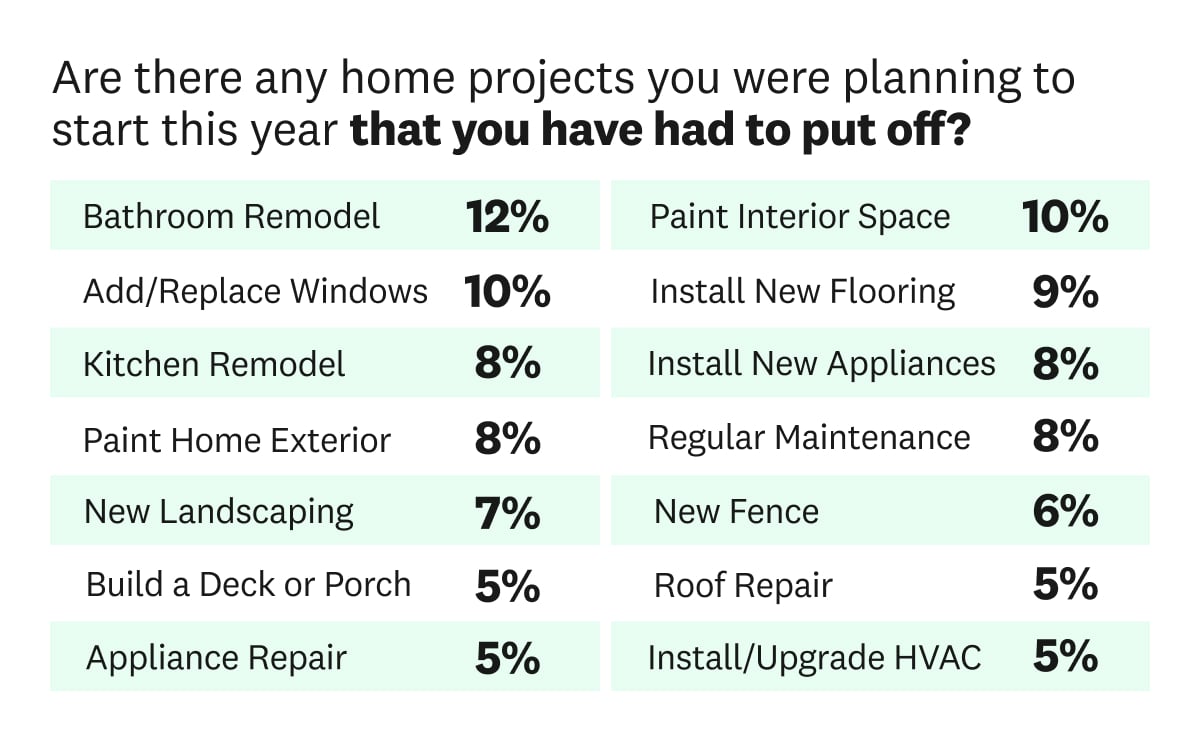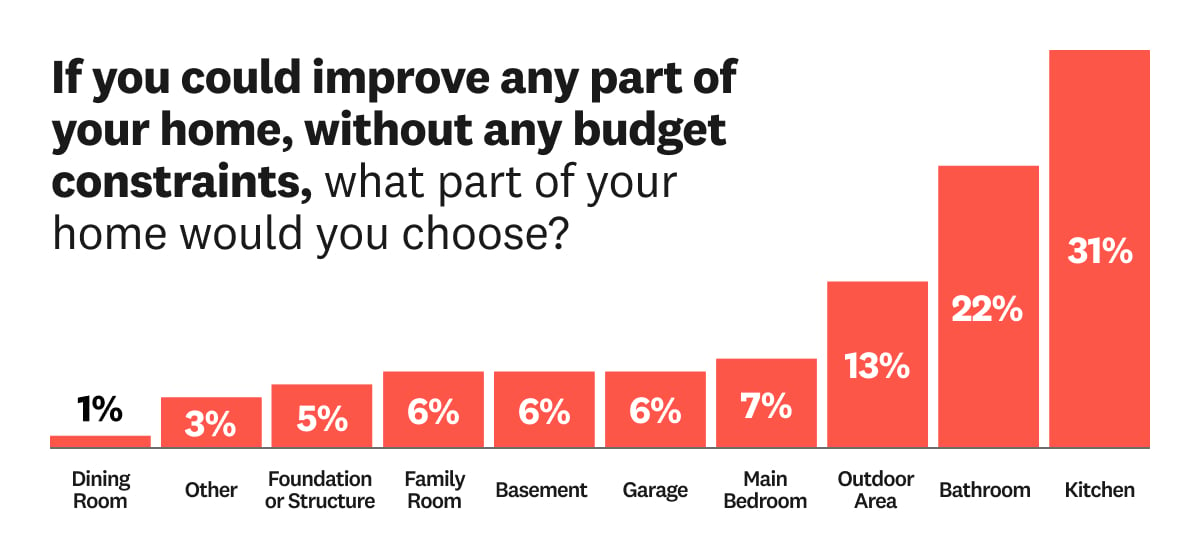Angi’s 2025 State of Home Spending Pulse Report: Homeowners Prioritize Maintenance Over Big Remodels in 2025
Angi’s 2025 State of Home Spending Pulse shows homeowners are delaying projects and focusing on maintenance due to rising costs.


As we enter National Home Improvement Month, our new State of Home Spending Pulse survey reveals a shifting landscape: homeowners are feeling the financial pinch, reassessing priorities, and finding new ways to make the most of their current homes.
Each year, Angi releases our annual State of Home Spending Report—a comprehensive look at how Americans are investing in their homes. Now, with our new Pulse survey, we’re checking in more frequently to track how homeowner sentiment and spending habits evolve throughout the year.
From inflation-driven delays to rising stress over repairs, here’s what 1,000 surveyed homeowners told us about how they’re navigating home maintenance and improvement in 2025.
Key Findings:
48% say stress from mandatory home repairs has increased since January
62% are more concerned about affording maintenance than they were at the end of 2024
71% of homeowners have postponed a planned home project this year
Homeowners now plan to stay in their homes an average of 5 years longer than originally expected
71% are focused on preventative maintenance to avoid costlier issues later
Homeowner Stress Is Climbing
Home maintenance has always required time and money—but in 2025, it’s causing more stress than ever. Nearly half (48%) of homeowners say the stress of mandatory repairs has increased since the start of the year. That’s on top of rising concerns about affordability: 62% are more worried now about covering maintenance and repair costs than they were just a few months ago.
This aligns with what we saw in our 2024 report, where maintenance was already the top source of budget-related stress—surpassing even healthcare, childcare, and debt.

Economic Pressures Are Delaying Projects
71% of homeowners have put off at least one home project this year. Why?
92% cite inflation
89% cite economic uncertainty
65% cite high interest rates
64% are concerned about income or job stability
The most commonly postponed projects include bathroom remodels (12%), interior painting (10%), and window replacements (10%). Notably, 58% said they delayed projects due to high materials or labor costs.

Preventative Maintenance Is the New Strategy
In the face of rising costs, homeowners are taking action where they can—71% are prioritizing preventative maintenance to avoid larger bills down the road. That includes:
Bundling repairs to cut labor costs (29%)
Choosing more affordable materials or services (19%)
Starting projects earlier to beat anticipated price hikes (23%)

Homeowners Are Staying Put—and Adjusting Plans
Homeowners now expect to stay in their current homes for an average of five years longer than originally planned. Affordability and economic headwinds are making it more difficult to move, leading many to reinvest in their existing spaces.
And it’s not just a small segment—28% say they’ve already been in their home 10 years longer than originally intended. Only 24% expect to move in the next five years.
Dreams of Renovation Haven’t Faded
Despite delays, many Americans still dream of upgrading their spaces. The top home projects homeowners hope to take on include:
Kitchen remodels (31%)
Bathroom renovations (22%)
Outdoor improvements (13%)
Younger homeowners and those living in newer homes (under 20 years old) are significantly more likely to have already taken on improvements like kitchen remodels or smart home upgrades this year. In fact, they are more than twice as likely to have started a kitchen remodel or installed a smart home device compared to owners of homes 50+ years old.

What This Means for the Industry
These findings point to a few clear trends:
Stress is rising: Repair costs and maintenance burdens are weighing more heavily on homeowners.
Cost-saving behavior is accelerating: Homeowners are getting creative—bundling projects, selecting lower-cost materials, and focusing on preventive care.
The stay-put mindset is solidifying: Long-term occupancy is becoming the norm, which could shift demand toward renovations over relocations.
Deferred dreams aren’t disappearing: Even with delays, there’s a strong underlying desire to improve key areas of the home, particularly kitchens, bathrooms, and outdoor spaces.
Methodology
This data comes from a survey of 1,000 U.S. homeowners who hired a pro for a home project, repair, or maintenance task in the past year. The survey was conducted via Pollfish from April 15–16, 2025, with age, gender, and region quotas applied to ensure a representative sample.
